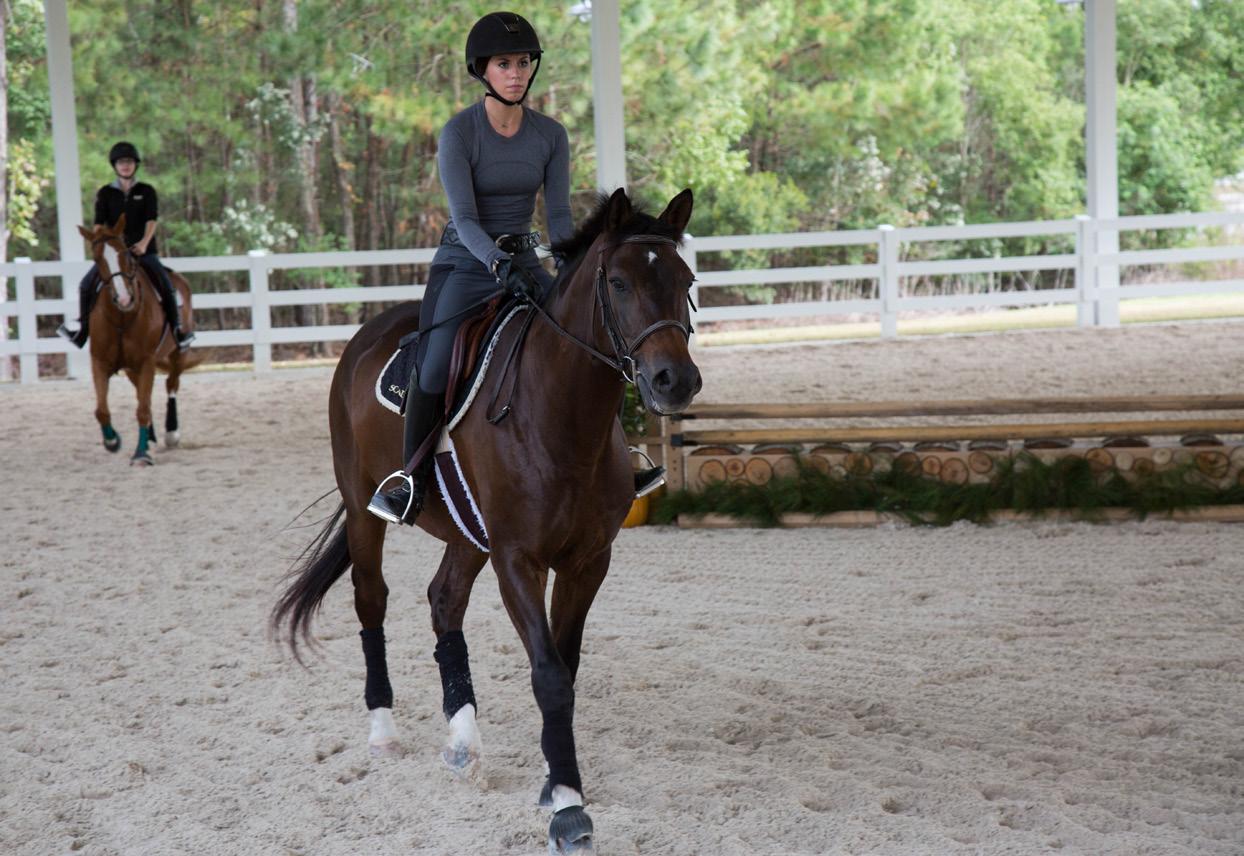Column Horses In Art: De Hamilton’s “Cerbero.” By Cicely Rhodin
Photo Credit: SCAD Digital Image Database
T
he Spanish Riding School of Vienna is the world’s oldest school for the equestrian arts. Its name evokes images of white Lipizzaner stallions performing as a full orchestra plays on, the music echoing off the stone walls of the Winter Riding School. However, that is not the image presented in Johann Georg de Hamilton’s “Cerbero,” which was painted in 1721.
White was the favored color of the royal family, so grey horses were selectively bred, but when the breed was first founded its members came in all colors, including Cerbero’s striking pinto. De Hamilton uses composition and form to portray Cerbero as a pinnacle of Classical horsemanship, even though his proportions are unrealistic.
De Hamilton depicts a Lipizzaner horse named Cerbero performing a capriole against a stormy pastoral background. The capriole, a movement which requires the horse to leap into the air and strike out with its hind legs, is highly traditional, but Cerbero’s coloring appears unusual. Cerbero is dark brown with a bolt of white slicing down his withers and along his crest. Anyone familiar with the Lipizzaner breed knows the horses are almost always grey, but this is a modern phenomenon.
The Capriole demands a horse be perfectly balanced, otherwise it will not be able to hold itself up or kick out successfully. De Hamilton mimics that perfection and balance in his painting. He places Cerbero at the center of the canvas and adds a stone pillar on the left for more weight. Cerbero is captured at the climax of his capriole; he is parallel to the ground, his knees are tucked in, and his legs are even with each other. However, there are peculiarities in Cerbero’s conformation. 15







